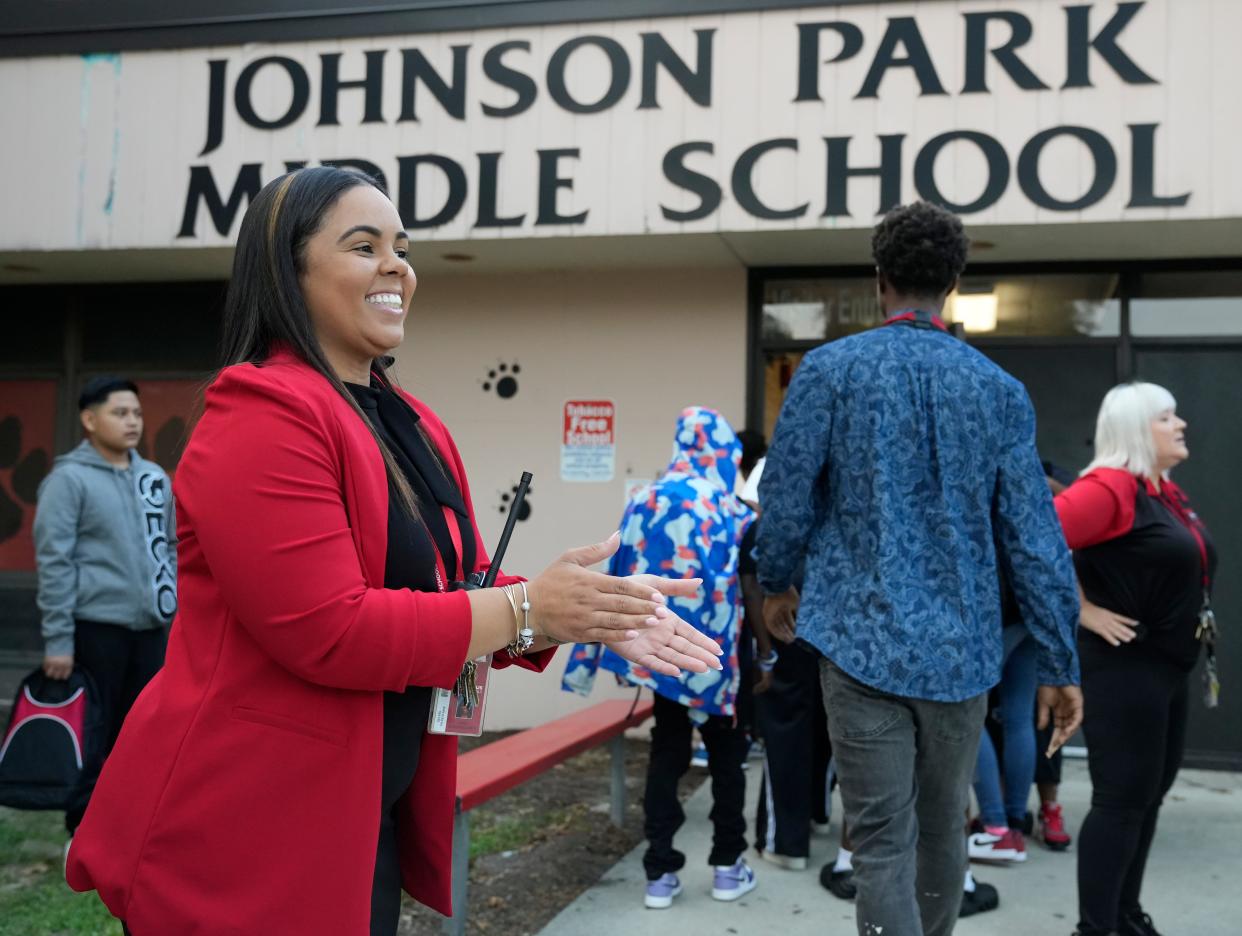Academic recovery from pandemic learning loss continues to vary by race, income, study shows

- Oops!Something went wrong.Please try again later.
Ohio's children are still recovering from pandemic learning loss, as test scores in English Language Arts are at or near where they were before the COVID-19 shutdowns, according to a new study of statewide test scores from Ohio State University.
That's the good news. The bad news is math scores, particularly those for middle and high school students, continue to lag. And children of color — whose learning losses were greater — still trail behind their white peers.
"These state-level averages mask substantial variation across school districts," according to OSU's Student Achievement and Learning Acceleration study. "Although 95% of districts have seen achievement improve in both ELA and math since spring 2021, the magnitude of this recovery varies widely."
Who is doing better?
Ohio educators have reasons to celebrate when it comes to reading recovery, OSU professor and study author Vladimir Kogan said. "In three years, it is pretty impressive to get growth that large on a statewide basis."
Average achievement on the spring 2023 exams showed students have returned to pre-pandemic levels (orhave nearly done so) in most tested grades.
And Kogan thinks Gov. Mike DeWine deserves some of the credit. In his opinion, DeWine's historic investments in the science of reading and phonics are paying off. The governor lobbied lawmakers to spend more than $160 million over the next two years to retrain teachers on phonics, put literacy coaches in the field and screen all children for signs of dyslexia.

"It shows you can really move the needle," said Kogan, a professor and director of undergraduate studies at OSU's Department of Political Science whose research focuses on state and local governments and public policy in education and other areas.
Not all of Ohio's reading scores are bouncing back, though
Some subgroups, like Black, Latino and economically disadvantaged students, remained "significantly" behind. And schools that saw the largest achievement declines as a result of the pandemic are recovering schools that saw smallest losses..
These widening achievement gaps were not exclusive to Ohio, according to a national education nonprofit.
In July, the Northwest Evaluation Association estimated that Asian American and white elementary students needed 2.2 months of extra schooling to catch up in math. Hispanic students required 2.9 months and Black students 3.2.
"Achievement gaps won't close by themselves," Kogan said. "It's definitely an area where we need to be very intentional and very focused."
What we can do
Rep. Phil Robinson, D-Solon, who is the ranking member on the Ohio House's Primary and Secondary Education Committee, said his big takeaway from the report was that we need to intervene sooner.
OSU's data showed that younger children can recover more quickly than older students.
"I contend that the data is showing us that it's way too late to close those gaps," Robinson said.

That's why he plans to introduce a bill in September to create universal kindergarten and preschool for all Ohio children.
"In states where we see some of the biggest gains, they are starting at a younger age," Robinson said.
He'd also like to expand Ohio's free school lunch program and give local school districts more flexibility to hire tutors, literacy coaches and other support staff for teachers.
The bill would likely struggle in the Republican-controlled Ohio General Assembly, in part over the cost of such programs.
When it comes to Ohio's overall math scores, Sen. Andrew Brenner, R-Delaware, told the USA TODAY Network Ohio Bureau that he would like to do for math what DeWine and the legislature have done for reading.
"I'm working with the (Ohio Department of Education) on basically comprehensive math reform," Brenner said. "It's going to be a little different because there's a lot of scientific evidence on the structure of literacy."

He thinks one of the problems is that while modern math techniques like Common Core can work, parents weren't taught that way, and struggle to help their children as a result.
Anna Staver is a reporter for the USA TODAY Network Ohio Bureau, which serves the Columbus Dispatch, Cincinnati Enquirer, Akron Beacon Journal and 18 other affiliated news organizations across Ohio.
This article originally appeared on The Columbus Dispatch: Study: Some academic recovery from pandemic, but youth of color trail

